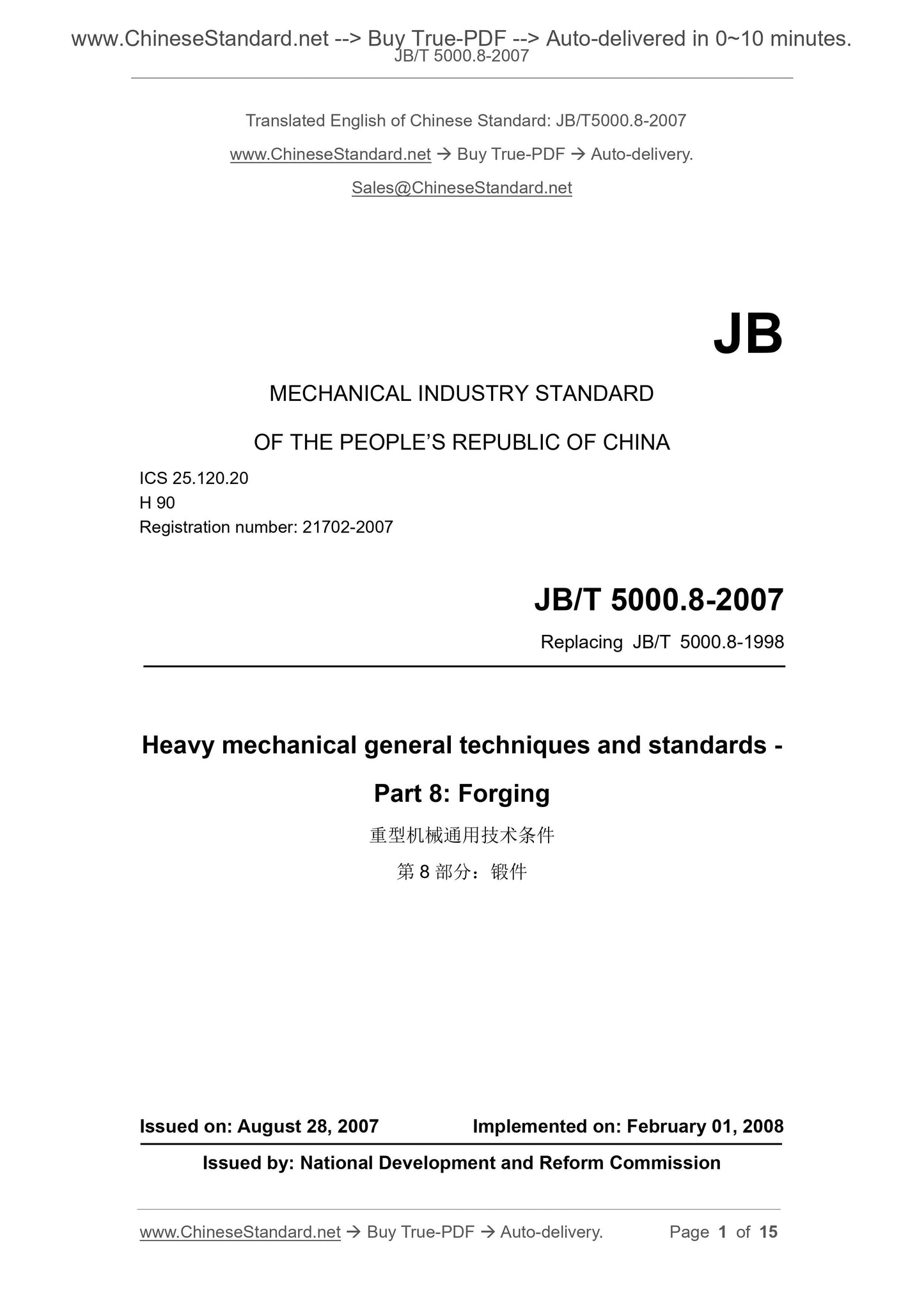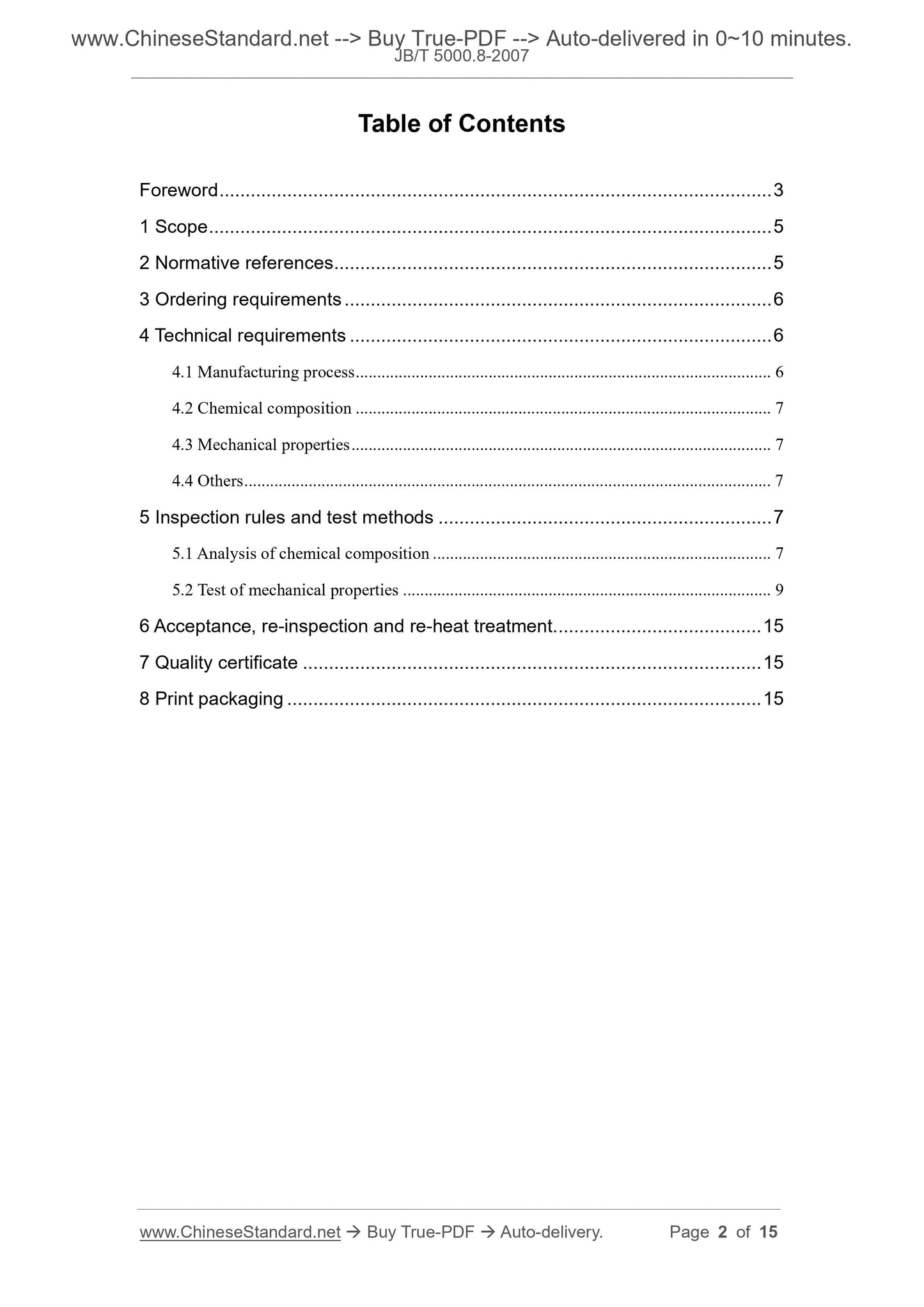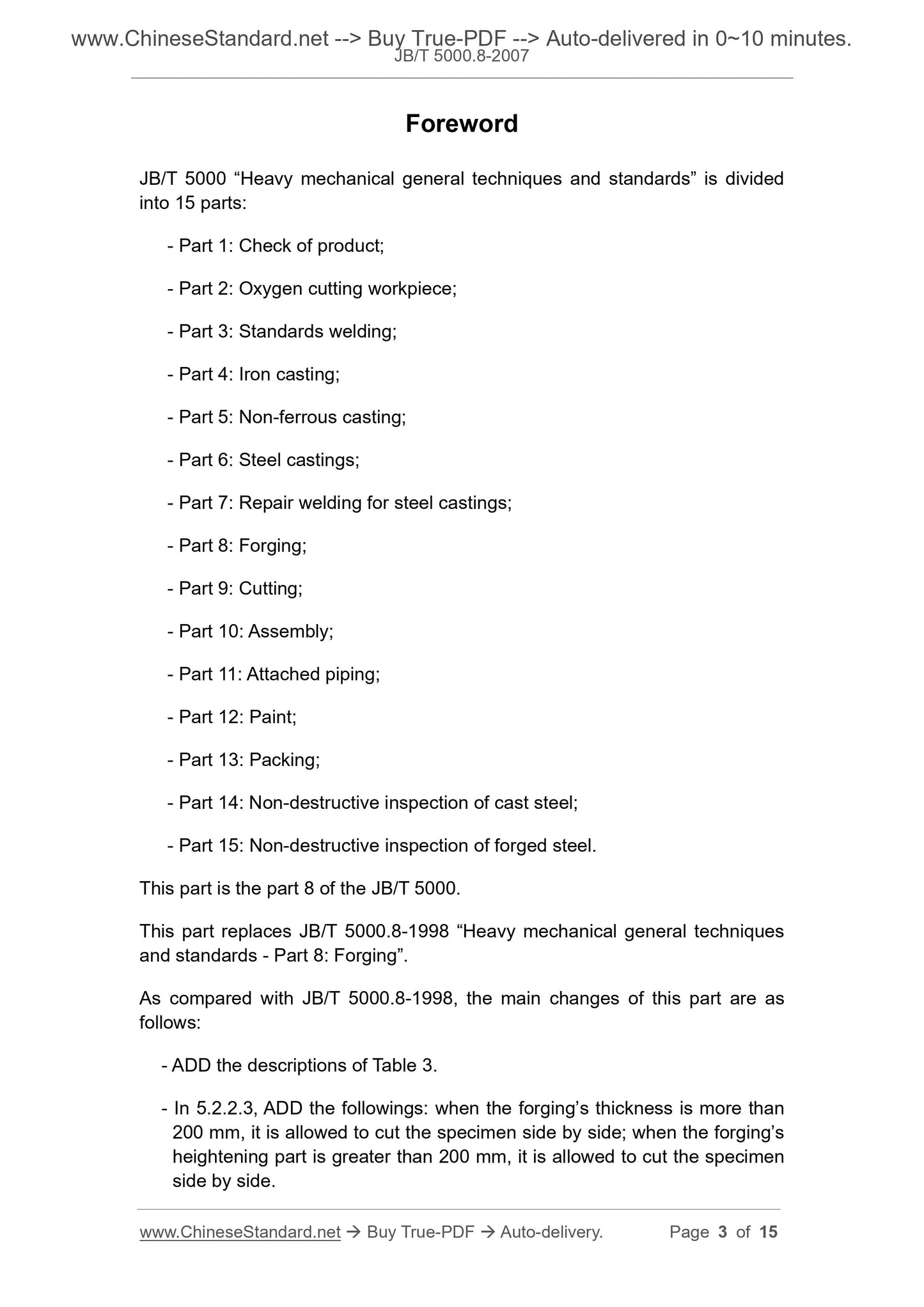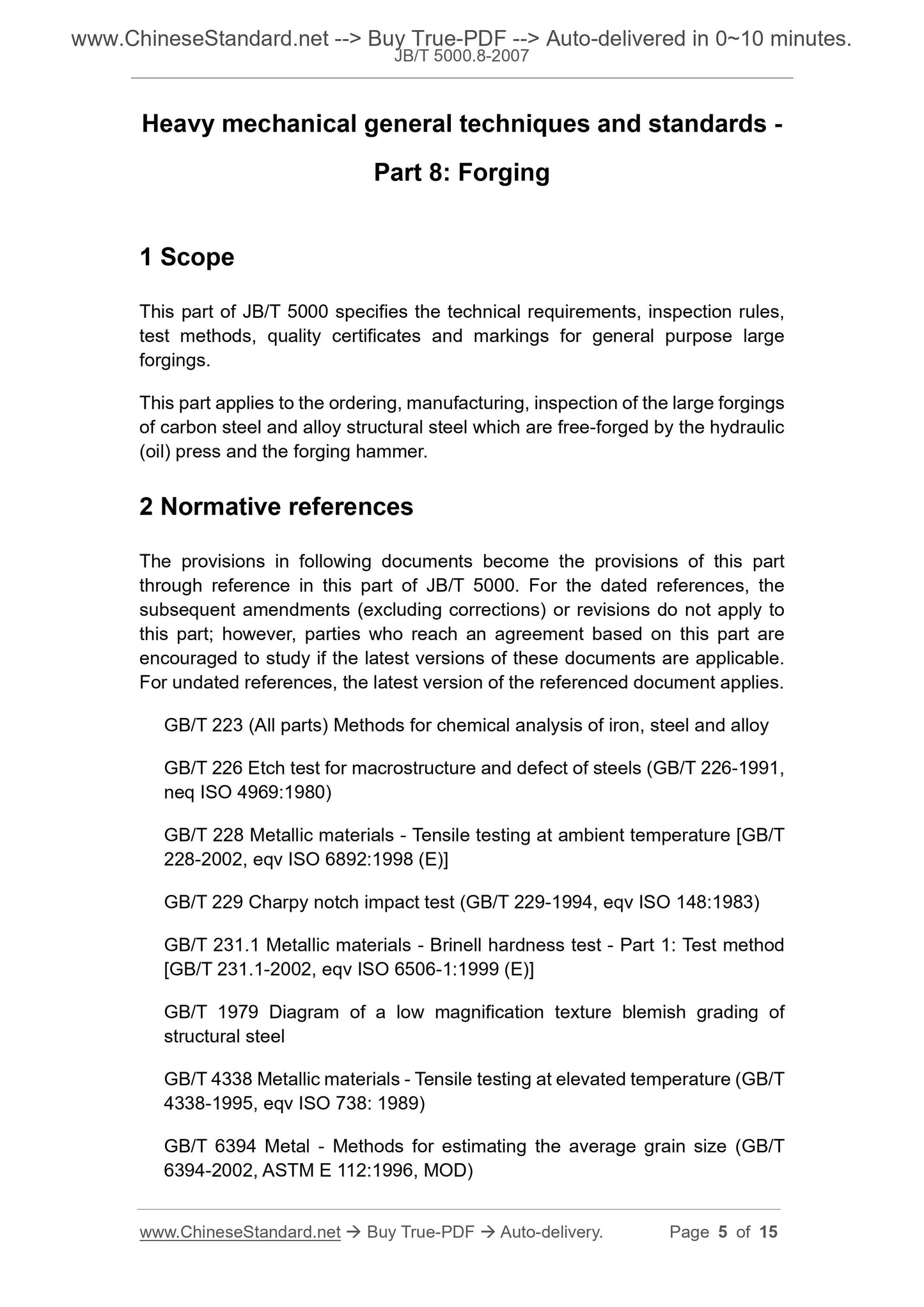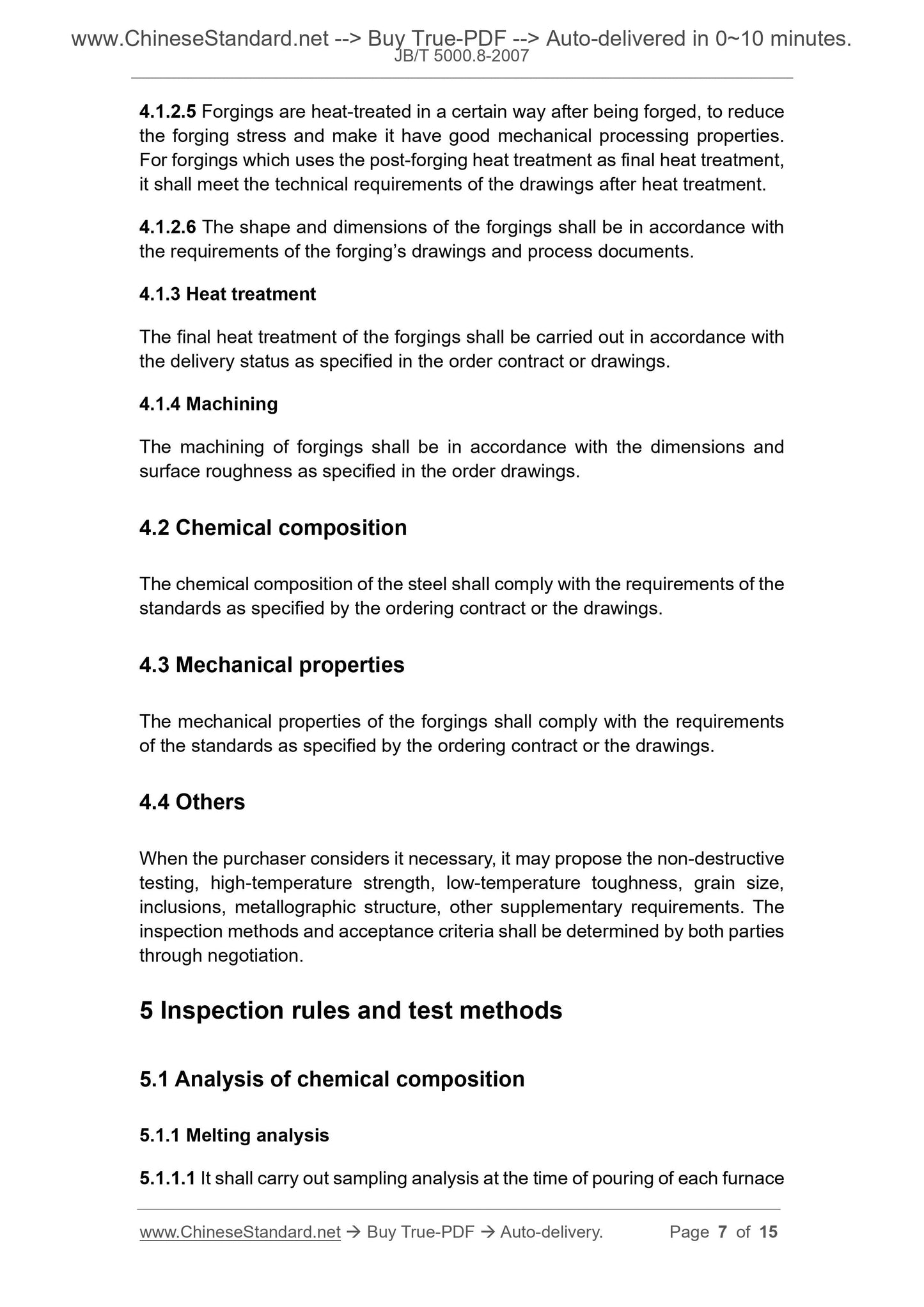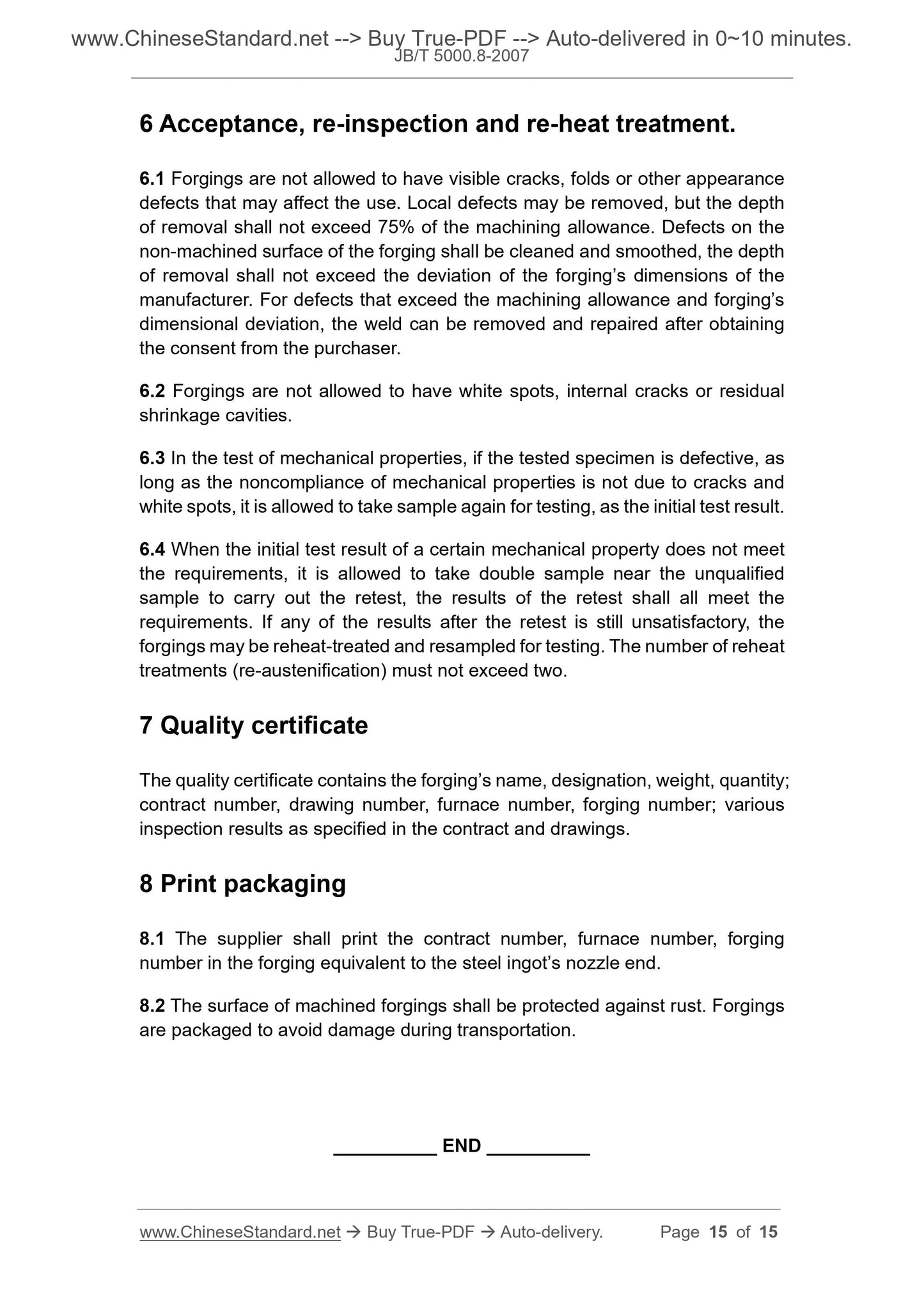1
/
of
6
www.ChineseStandard.us -- Field Test Asia Pte. Ltd.
JB/T 5000.8-2007 English PDF (JB/T5000.8-2007)
JB/T 5000.8-2007 English PDF (JB/T5000.8-2007)
Regular price
$75.00
Regular price
Sale price
$75.00
Unit price
/
per
Shipping calculated at checkout.
Couldn't load pickup availability
JB/T 5000.8-2007: Heavy mechanical general techniques and standards - Part 15: Non-destructive inspection of forged steel
Delivery: 9 seconds. Download (and Email) true-PDF + Invoice.Get Quotation: Click JB/T 5000.8-2007 (Self-service in 1-minute)
Newer / historical versions: JB/T 5000.8-2007
Preview True-PDF
Scope
This part of JB/T 5000 specifies the technical requirements, inspection rules,test methods, quality certificates and markings for general purpose large
forgings.
This part applies to the ordering, manufacturing, inspection of the large forgings
of carbon steel and alloy structural steel which are free-forged by the hydraulic
(oil) press and the forging hammer.
Basic Data
| Standard ID | JB/T 5000.8-2007 (JB/T5000.8-2007) |
| Description (Translated English) | Heavy mechanical general techniques and standards - Part 15: Non-destructive inspection of forged steel |
| Sector / Industry | Mechanical and Machinery Industry Standard (Recommended) |
| Classification of Chinese Standard | H90 |
| Classification of International Standard | 25.120.20 |
| Word Count Estimation | 11,145 |
| Date of Issue | 2007-08-28 |
| Date of Implementation | 2008-02-01 |
| Older Standard (superseded by this standard) | JB/T 5000.8-1998 |
| Quoted Standard | GB/T 223; GB/T 226; GB/T 228; GB/T 229; GB/T 231.1; GB/T 1979; GB/T 4338; GB/T 6394; GB/T 10561; JB/T 5000.15 |
| Regulation (derived from) | ?National Development and Reform Commission Announcement 2007 No.51 |
| Issuing agency(ies) | Ministry of Industry and Information Technology |
| Summary | This standard specifies the technical requirements of large forgings for general purposes, inspection rules, test methods, quality certificate and signs. This section applies to water order (oil) freedom of the press and hammer forged carbon steel and alloy steel large forgings, manufacturing and testing. |
Share
